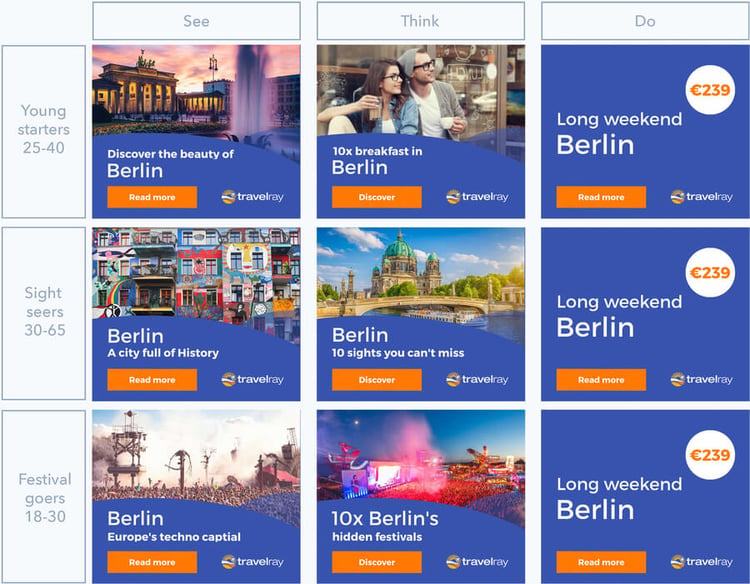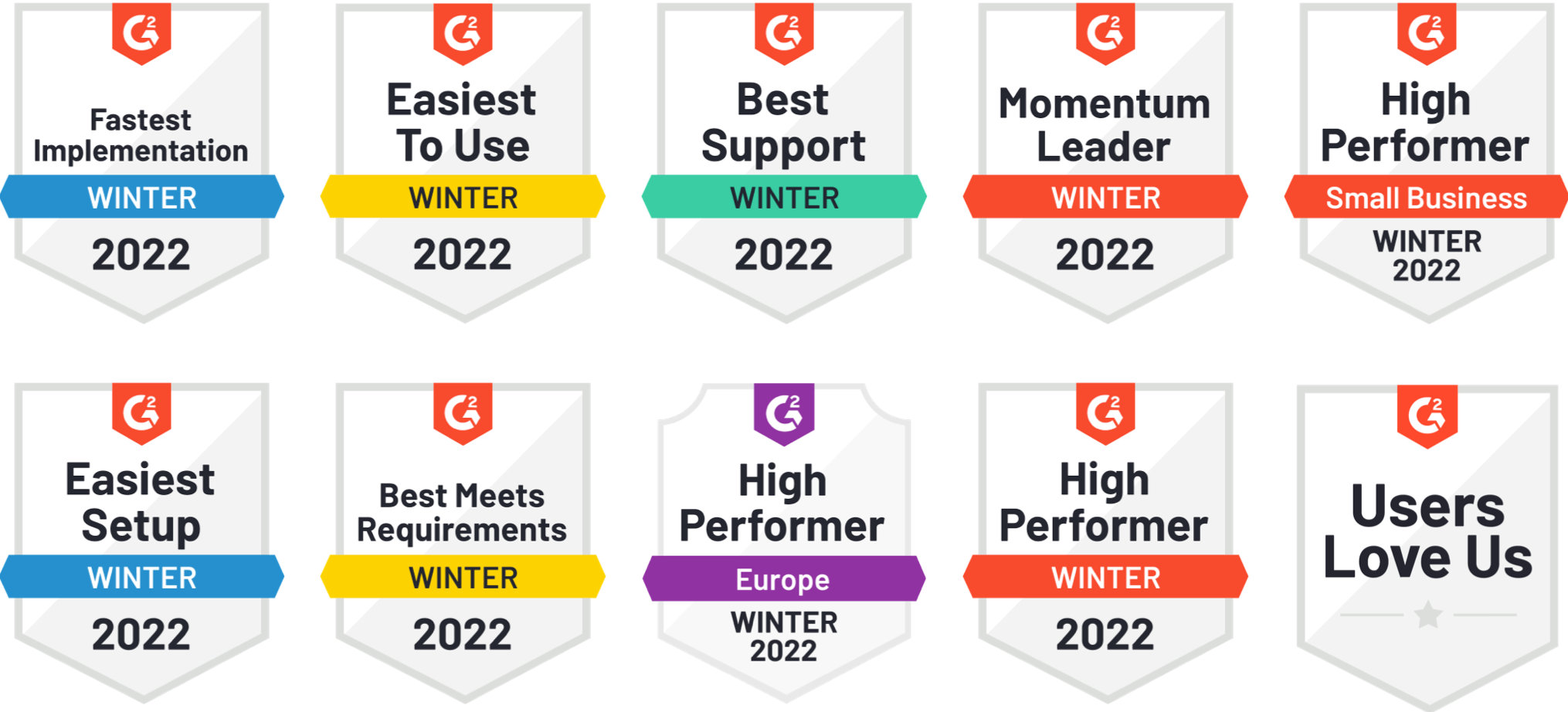Relevance has always been a real topic in advertising. Now that programmatic ad-tech allows us to target our audience with hyper-precision, it doesn’t make sense anymore to show the same ad to all your different target audiences in each stage of the funnel.
Key here is to diversify your creatives in order to optimize your campaign results. After all, your creatives are responsible for more than 50% of campaign performance. This makes being relevant the top opportunity this year.
Campaign performance
Your creatives are responsible for more than 50% of campaign performance. For example: Showing several products in a dynamic retargeting banner is common practice. However, one of our more recent case studies shows that by showing only the most relevant product, your CPA can be cut almost in half while sales may double. Showing the right ad at the right time to the right person is the way to significantly improved results.
Although most marketers are well aware that the buyer journey is very personal and diverse, operational cost keeps them from tailoring their ads. This hurdle is an easy one to overcome given the right tech stack. Let’s use a simple example.
A travel company wants to advertise one of its destinations, Berlin, to several key target-audiences, while keeping messaging relevant throughout the funnel. Using the See, Think, Do model, the online marketing manager creates a matrix: The customer journey is on the X-axis and the audiences on the Y-axis. As a side note: It shouldn't matter whether you're using a different model from See, Think, Do, like Touch, Tell, Sell or AIDA. Any of these models can be put on the X-axis.

In the See stage, the goal is to target as many attention for the destination as possible, with copy that fits the various audiences. A CPM strategy is employed. The Think stage of the campaign aims to attract traffic to the website, paying per click. Finally, a retargeting banner should drive actual conversions, with a CPA strategy behind it.
Relevant ads
Creating a total of two templates is enough to create an infinity of relevant creatives. The campaign requires nine banners in total, which can already be a daunting task for any designer. A clever approach is to create two templates: One for both the See and Think phase, the other for the Do phase. A total of 2 hours is needed to create the templates. Once finished, the different versions are created in a matter of minutes.
Using this setup, creating relevant ads is easy. An even leaner approach would be to test this approach for one audience only, allowing you to save time and money on the trafficking and ad spend. When the approach proves successful for the first audience, it’s time to reproduce for other audiences. Finally, you could choose to go live with one banner set at the time: The See banners in week one, the Think banners in week two and the Do banners in week three.
A travel agency typically has a lot more destinations than just Berlin. Following this approach, offering 100 destinations would require creating 900 banners. In this scenario Dynamic Creative Optimization (DCO) would be the perfect solution. Simply set up you product feed for display advertising and connect it to the two templates. Both Adroll and Google have very interesting features for dynamic prospecting.
Automation with dynamic retargeting
By setting up both your prospecting (See, Think) and retargeting (Do) ads as dynamic creatives, each individual banner will create itself, pulling in the relevant imagery, messaging and pricing from the feed. Your display ads will be hyper relevant while your time investment is reduced to a minimum.
Need help setting up your campaigns this way? Feel free to contact us for some one-on-one sparring.


